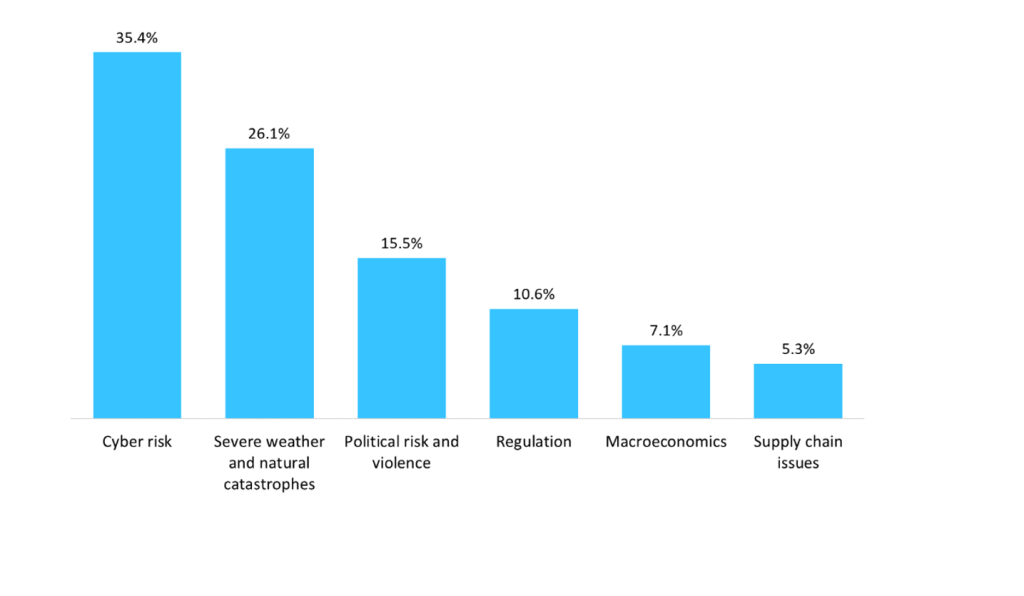Marcus Bowser, UK life sales and practice leader at Willis Towers Watson, explains how risk appetite frameworks that are linked to an insurer’s vision, strategy and operations provide a more solid platform for informed business decisions. If applied astutely, Bowser says there are numerous potential advantages for insurers in a well-founded and understood risk appetite framework.
Although the majority of insurers have implemented risk appetite frameworks, the emphasis within them is frequently on risk tolerances that constrain risk exposures and consequently risk taking.
In some firms, these are based solely on capital measures, which means the framework ignores the other priority measures that the board uses to steer the business and communicate to shareholders.
Mind the gap
This is potentially a perilous gap for the fundamental reason that the risk appetite framework has more value as a strategic enabler rather than simply a control device.
How well do you really know your competitors?
Access the most comprehensive Company Profiles on the market, powered by GlobalData. Save hours of research. Gain competitive edge.

Thank you!
Your download email will arrive shortly
Not ready to buy yet? Download a free sample
We are confident about the unique quality of our Company Profiles. However, we want you to make the most beneficial decision for your business, so we offer a free sample that you can download by submitting the below form
By GlobalDataHow confident can a company be about its vision and strategy if it hasn’t considered the risk and reward associated with the options available to management?
And how will it do that? The risk appetite framework can support the necessary decision making.
A firm’s vision is an excellent place to start and should reflect the question: how should we do business?
Vision statements should ideally convey who the company serves, what it provides and what distinguishes it from other companies.
Through this focus, companies are often able to achieve a higher return.
If a firm’s vision sets out the direction of travel, then its strategy addresses how the firm will get there.
In other words, the strategy sets out the plan for delivery, including what, when and by whom, and inevitably needs to focus, as with the vision, on the customer need.
Indeed, customer centricity is a key consideration in formulating the strategy for any firm, helping to differentiate a firm’s products and services through an enhanced experience.
But where does this leave the risk appetite framework?
Agreeing on a risk appetite
Agreeing a vision is all very well, but it needs to align with the capabilities of the firm in question.
Is there really value in a grand vision if a company lacks the capability to deliver it?
Adopting a risk-based approach up front can pay dividends here.
Useful questions to consider would include:
- Do we understand and can we articulate and measure the risk associated with the vision?
- Are we adequately rewarded for taking on the risk?
- Can we manage the risk?
- Do we have a competitive advantage in managing the risk?
Questions like these should aid the board in evaluating risks and, in turn, landing on a set of risk preferences.
With this as a starting point, it should simplify a decision around which risks to seek, accept, avoid and remove as part of company strategy.
Risk preferences
These risk preferences need to be complemented by risk tolerances that define the firm’s risk-taking capacity. Although most insurers have clearly defined risk tolerance statements, these are often based solely on the quantity of regulatory capital and could lead to decisions that are acceptable in terms of their capital usage, but which, for example, introduce excessive earnings volatility.
More often than not, risk tolerances and risk preferences will have to work co-dependently in the overall risk appetite framework so that growth ambitions aren’t thwarted, but at the same time aren’t left unbridled.
Operationalising the framework
Once the vision and strategy have been determined, they then need to be applied at the coalface.
To do this, firms need to reconcile the risk limits and targets to the risk tolerances to make them relevant to the day-to-day users of those limits and targets.
Setting the limits and targets is an opportunity for firms to ensure they’re acting on their strategic planning and tracking progress accordingly, but it’s an opportunity too often missed in our opinion.
Bridging that gap involves reconciling the limits and targets to company strategies, ideally with the risk-by-risk capacity and exposure compared graphically with the limits and targets overlaid.
This also means that the limits can be used to inform future strategy when these decisions are revised.
There are, however, a number of considerations that make this process complex. While many risks will reconcile readily with a firm’s strategy, some risks are harder to assign quantitative limits than others – for example:
- conduct risk
- financial crime
- information-security risk
- and reputational risks.
Also, too many limits can make the risk appetite framework unwieldy. A company will need to prioritise the measures that succinctly summarise the risks to the business, ensuring reporting of exposures is more likely to be considered value adding by the board.
Channelling risk appetite
Making the risk appetite framework a living, breathing asset for the business requires a strong risk function to co-ordinate the process of linking the vision and strategy, through risk preferences and tolerances, to the risk targets and limits employed by the business at large.
If applied astutely, there are numerous potential advantages for insurers in a well-founded and understood risk appetite framework.
As well as supporting enhanced risk awareness and management decision making, it should also inform and form a coherent whole with a firm’s vision and strategy.
For all the latest insight, news and data on the global life and health insurance and reinsurance markets, visit www.lifeinsuranceinternational.com








